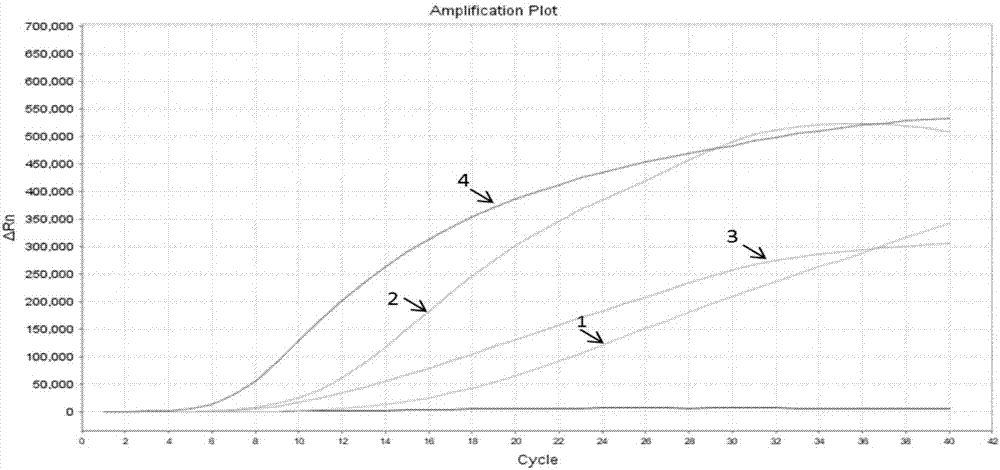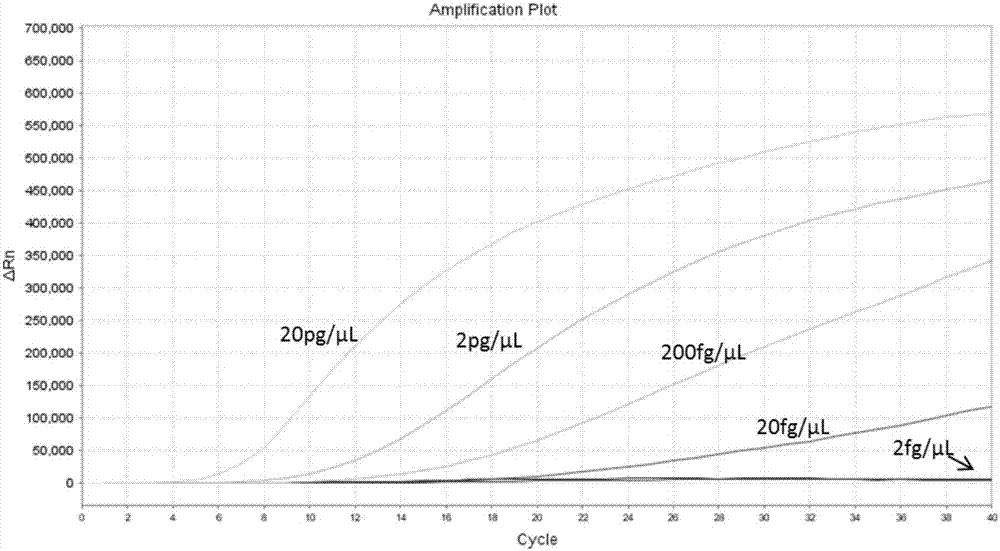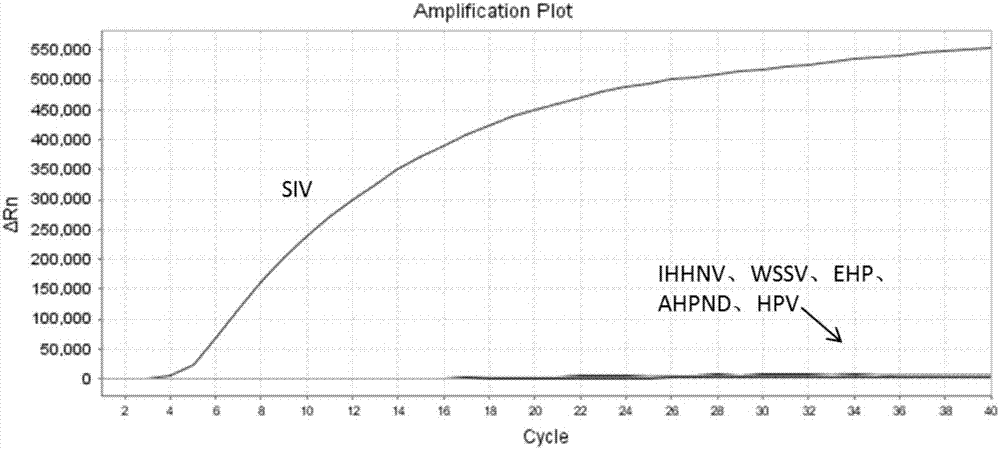RAA (recombinase-aid amplification) constant-temperature fluorescence detection method and reagent for SIV (shrimp iridovirus)
A technology of iridescent virus and detection kit, which is applied in the field of molecular biology, can solve problems such as low sensitivity, complicated operation, and unsuitable technical requirements for detection personnel, and achieve the effect of simple identification and simple operation
- Summary
- Abstract
- Description
- Claims
- Application Information
AI Technical Summary
Problems solved by technology
Method used
Image
Examples
Embodiment 1
[0029] The shrimp iris virus of the present invention searches the gene sequence of the shrimp iris virus strain in the Genebank database, and uses DNAMAN 6.0 software to compare multiple sequences to find out the conservative segments. Four sets of primers and probes were designed in the conserved region, and BLAST alignment was performed in the NCBI database. The sequences of the primers and probes are shown in Table 1. The positive sample amplification curve is as figure 1 Shown.
[0030] Table 1 Primer and probe sequence:
[0031]
[0032] by figure 1 The results show that the amplification curve of the fourth set of primers and probes is the most typical, with obvious exponential phase and plateau phase, high fluorescence intensity (ordinate value), and small CT value (the intersection of the curve and the threshold line) The corresponding abscissa) result analysis is shown in Table 2. Other primer probe curves have a low rise height, a large CT value, and the plateau period...
example 3
[0053] Example 3: The kit shrimp iridescent virus of the present invention
[0054] 1. Extraction of nucleic acid from positive samples
[0055] 1.1. Nucleic acid extraction: Use marine animal tissue DNA extraction kit for DNA extraction.
[0056] 2. The configuration of the RAA reaction system: each test sample corresponds to a RAA reaction dry powder tube. The reaction components and the added volume in each RAA reaction dry powder tube are shown in Table 3.
[0057] table 3:
[0058] RAA reaction system components
Volume (μL)
A Buffer
12.5μL
B Buffer
2.5μL
Primer mix
4μL
Specific fluorescent probe
0.6μL
2μL
ddH 2 O
28.4μL
total capacity
50μL
[0059] A Buffer is 20% PEG; B Buffer is 280mM MgAc
[0060] 3. Place the RAA reaction tube equipped with the reaction system in the ABI7500 thermal cycler, and perform RAA amplification according to the following procedures: 39°C, 40s; 39°C, 20min, a total of 40 cycles. The fluorescence of the FAM channel...
Embodiment 4
[0063] Example 4: Evaluation of the RAA detection kit of the present invention in clinical practical applications
[0064] The test kit of the present invention is used to conduct a clinical blind sample experiment to detect 500 prawns; the experimental results show that the fourth primer pair of the present invention can distinguish shrimp iridescent virus, and the positive coincidence rate with nested PCR is very high. Among 500 copies of nested PCR, 318 copies were positive results, 182 copies were negative results, 318 copies were positive results by RAA method, and 181 copies were negative results. One of them may not be tested due to contamination Out, there are 182 negative results, and all of them can be one-to-one correspondence.
PUM
 Login to View More
Login to View More Abstract
Description
Claims
Application Information
 Login to View More
Login to View More - R&D
- Intellectual Property
- Life Sciences
- Materials
- Tech Scout
- Unparalleled Data Quality
- Higher Quality Content
- 60% Fewer Hallucinations
Browse by: Latest US Patents, China's latest patents, Technical Efficacy Thesaurus, Application Domain, Technology Topic, Popular Technical Reports.
© 2025 PatSnap. All rights reserved.Legal|Privacy policy|Modern Slavery Act Transparency Statement|Sitemap|About US| Contact US: help@patsnap.com



